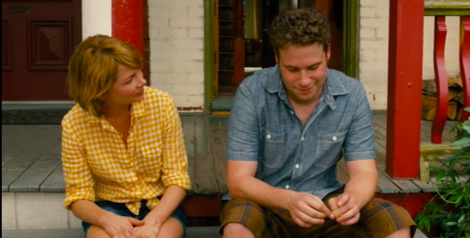
“Take This Waltz” Screen Shots provided by Magnolia Pictures
Composition and Body Language
In Sarah Polley’s second directorial film Take This Waltz, a woman’s inner struggle between two loves becomes visually overt. Margot, played with childlike expression and melancholy by Michelle Williams, grapples with her loving devotion to her husband Lou (Seth Rogen) and momentary attractive passion for a next-door neighbor Daniel (Luke Kirby). She sees her marriage slowly drifting from her, conversing with her husband in baby talk and awkwardly expressing physicality, as he grows increasingly consumed with his cooking. A chance encounter on a plane ride with her unknown neighbor sparks an instant connection, which meanders but grows each day. Her struggle is fighting and accepting her ephemeral desire, but also learning to live in it, to suffer through it, and find her way out of it.
How Polley explains this internal fight is in her beautiful mise en scene, compositions and colors that create a comparative look at both of Margot’s relationships. Privy to a frontal shot, Polley captures both couples in nearly identical form, forcing the viewer to find elemental differences, and subtle hints towards the slow trajectory of Margot’s emotional state and ultimate decision.
After the meet-cute in an historical reenactment and airplane ride, Margot and new love interest Daniel sit next to each other on the shuttle to baggage claim. They share a cab and realize they live on the same street, too.
Similar to the arc of Margot’s internal struggle, a visual story evolves between her and her husband Lou, with repeated and familiar shots that capture the changing body language between husband and wife, intricately indicating the digression of their once imaginatively perky relationship. They can only speak to each other in baby-talk, only heat their romance with childlike role play. Even that is slowly deteriorating.
There are multiple progressions occurring in multiple spaces. This, to Polley’s credit is laid out rather pointedly for us, emphasizing the same shots and placements throughout every act, forcing us to find the differences at play. This takes place from above their bed, again a frame with two bodies sharing intimate space. The first of this progression begins with them waking-up spooning, Lou’s hand outstretched over Margot’s body. The next time we return to this shot is right after some more baby talk, facing each other this time in which sex proceeds to follow, feeling more like duty than desire. The last time it’s used, there is physical and emotional separation taking place. Margot has fallen for Daniel and stares off the side of the bed. Lou looks to the ceiling, beginning to realize the dubious premonitions he’s tried to ignore.
In these bed scenes, Lou is often the initiator of intimacy, while Margot’s intimate kick-starts and ways of connecting come through impersonal contact, embraces from behind which lack a mutual affection, demonstrating a temporary dissatisfaction and immediate body to lean upon. This eventually becomes a pet peeve for Lou, who would rather focus on his cooking than Margot’s constant playfulness. This will happen again in the final scene, as Margot’s only form of communication, this time with Daniel, comes from a back embrace.
But Margot’s fleeting romance with Daniel and more importantly her negotiation between this freeing love and guilty marital devotion is demonstrated in visual similes (note the identical clothing above with two different men). Polley captures Margot with Daniel and Lou in compositional accord, forcing a comparative reaction from her viewers in order to prod the subtle differences nudging Margot to pursue her extra-marital passion. These happen in the two-shots that permeate Polley’s cinematography, and in a dinner table scene.
Look at the small differences between the two couples. Lou is focused on his food, staring at it, hunched over in a less intimate, more bored manner. Daniel gazes into his subject intently, leaning in without his food on his mind. The married couple is shadowed in an enveloping darkness. The budding friendship finds space, light, and beauty as its backdrop. Ice cream, flowers, a playground. They are little kids again and all they have are each other.
The best scene from this film takes place on a carnival ride using a fixed camera. It encapsulates the entire mood of the film, but most specifically of Margot. She and Daniel whirl around on a spinning ride. It’s dark, but disco and strobe lights saturate the room with warm purples, red, yellows, and magentas. By nature of the ride, Margot and Daniel slide laterally within their seat on the abrupt turns, dizzying riders to the echoing sounds of “Video Killed the Radio Star.” Within this momentary bliss a conflation of feelings infiltrates Margot’s head. They slide close, she screams, she smiles. Newton’s law in full effect, Daniel stares at her peaceful, exuberant state. She becomes uncomfortable with his voyeurism as the song changes to its sappy interlude, realizing his romantic leaning, quite literally. Her gloom quickly consumes the moment and Daniel dejectedly looks away. The song, barely audible, seeps back in, the chorus starting anew. Margot reforms her contentment, swaying her hair into the inorganic wind. And then silence. The ride stops, the harsh fluorescence turns on, and the couple looks star struck, lost in a moment that has abruptly shut down.
Then a medium long shot, placing them in proper context: A dirty warehouse with a dirt floor. It’s far from that previous ephemeral ideal. The ride personifies Margot’s struggle, conflating the utopic and mundane, fumbling the momentary for the enduring. Back to the real world.
Margot’s momentary bliss with Daniel turns out to be just that. She has fallen for a “new” man. But as Lou’s sister, played by Sarah Silverman, proclaims to her, “new things get old.” Sometimes it takes an experience to realize who you are. Margot’s separation, connection, and then separation give her awareness. She is in transition and, like the carnival ride in which she sits alone, she circulates. Yet, for the first time, she accepts and acknowledges this transition, facing her fear, alone but liberated.

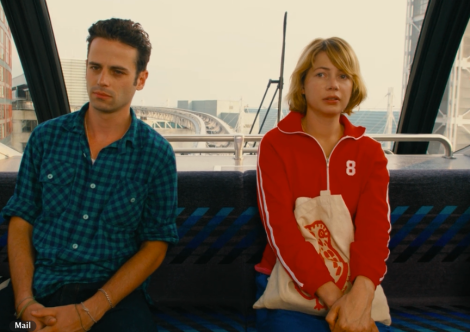
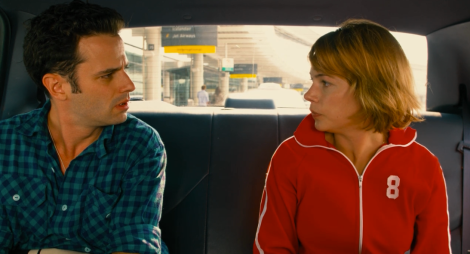
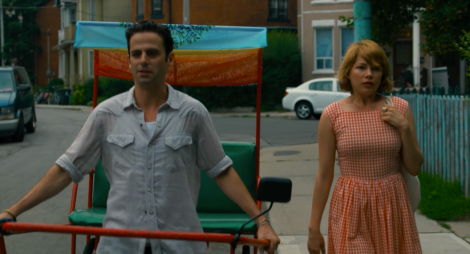
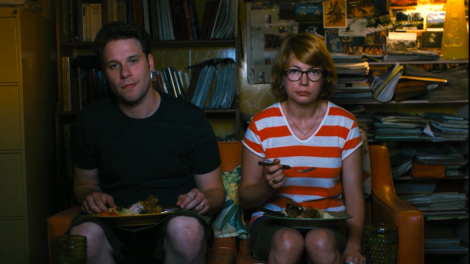
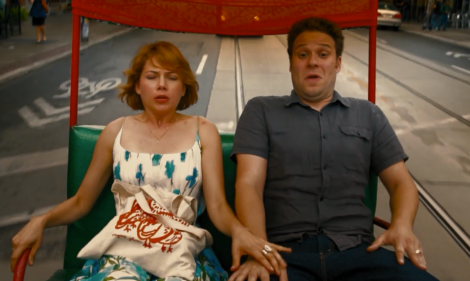
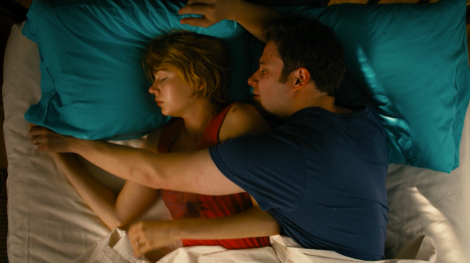
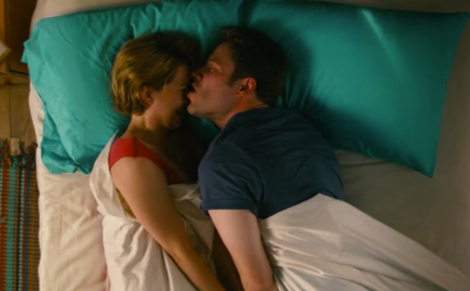
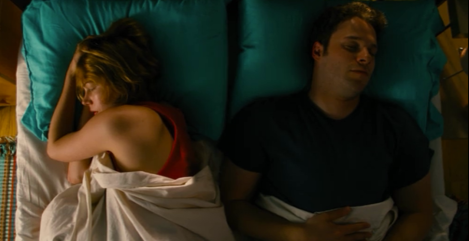
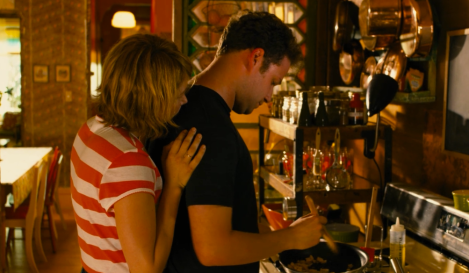
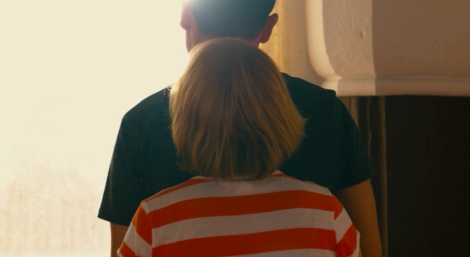
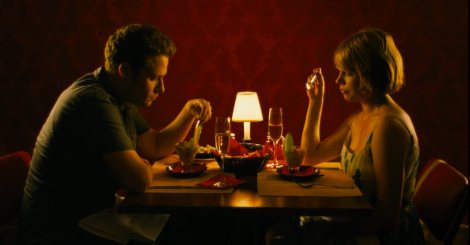
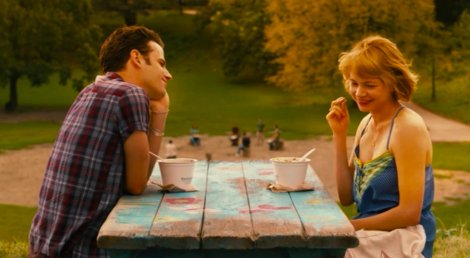
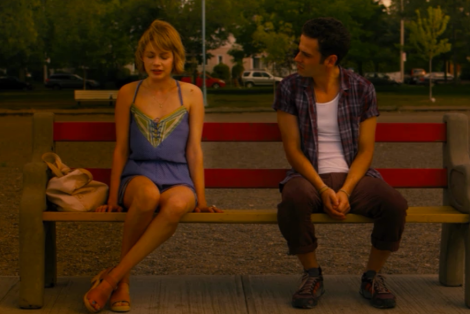
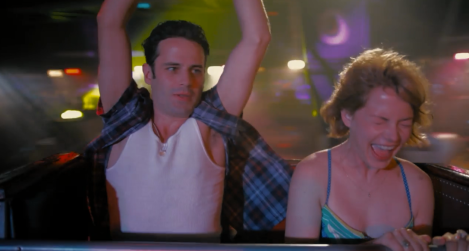
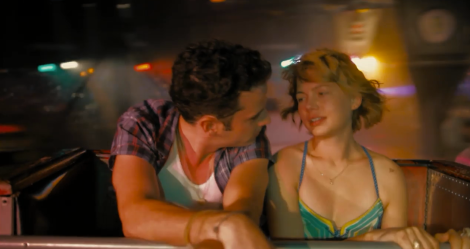
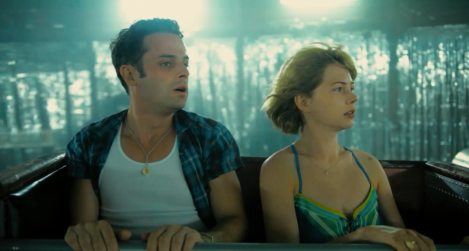
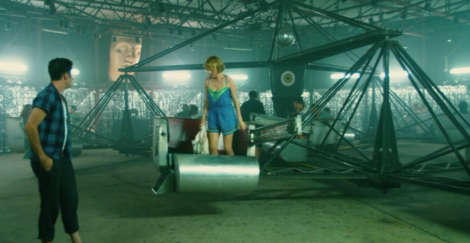
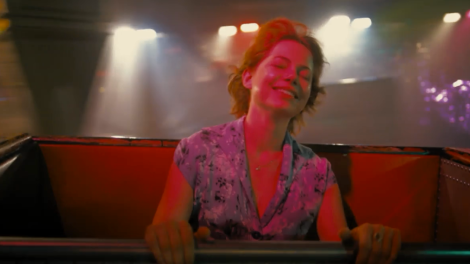
Wow, very cool Jake. Loved this movie.